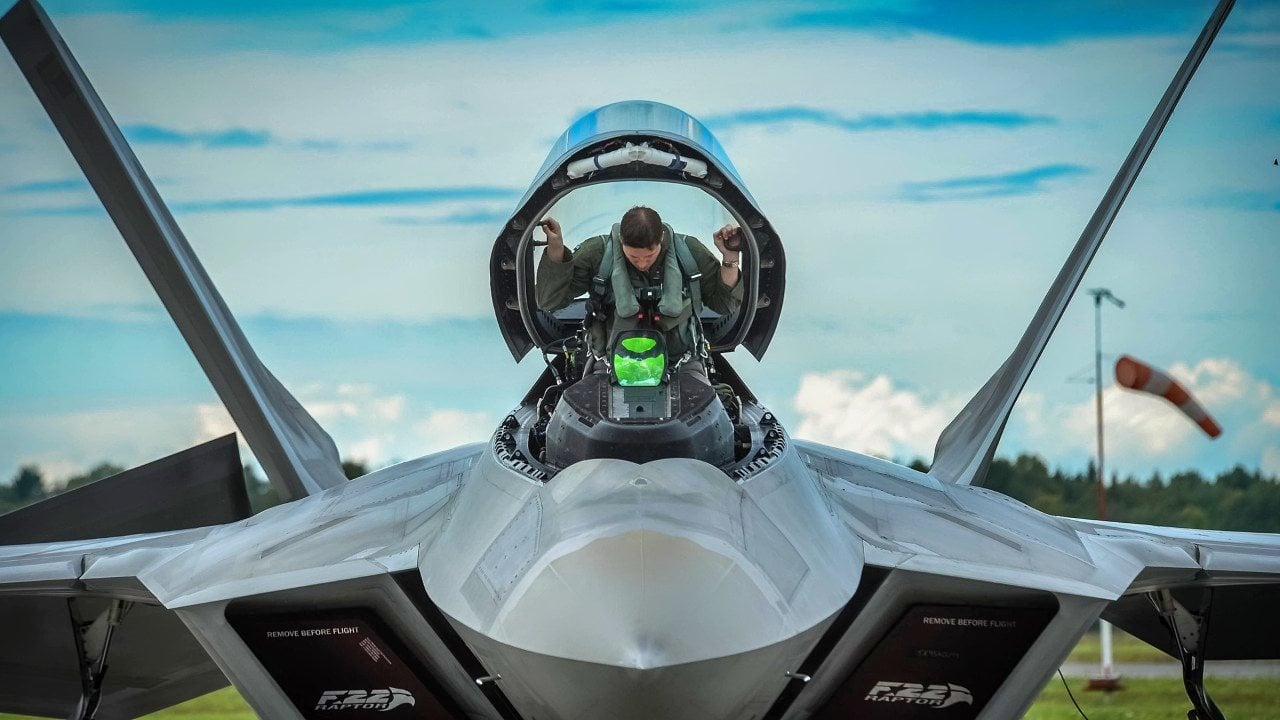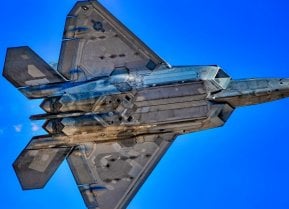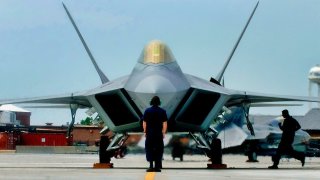Israel Will Never Get the F-22 Raptor Stealth Fighter
The F-22 Raptor stealth fighter production line closed years ago, and to reopen it when NGAD and F/A-XX are around the corner would be silly.
The time the U.S. considered delivering F-22 Raptors to Israel: As Israel’s war to obliterate Hamas rages on, the IAF’s fleet of F-35I Adir fighters have gained notoriety for their role in airstrikes targeting the enclave.
The American-made fifth-generation fighter perhaps represents the most formidable component of the IDF’s military apparatus. While the F-35 Lightning II is already considered to be the most sophisticated fighter of its kind to fly the skies, the Israeli modified “Adir” variantis considered to be even more advanced.
The Israeli Air Force also flies specialized versions of other American airframes, including the F-15I Ra’am and F-16 “Soufa.” Notably, one particular platform has never made it to Israel. In fact, the F-22 Raptor has never been exported outside of America.
Back in 2020, however, the legendary airframe was almost sold to the IAF under the then-Trump administration.
F-22 and Israel: What Happened
In October 2020, then-U.S. Secretary of Defense Mark Esper told Israeli officials that the Trump White House had approved the sale of F-22 Raptor fighters to the Jewish state.
The London-based Asharq Al-Awsat news outlet first reported this potential transaction, which allegedly was occurring alongside the sale of precision-guided bombs to Israel.
The Jewish state has expressed interest in acquiring the Raptor fighter. More recently, Israeli officials pressed Washington to agree to deliver the F-22 to ensure its qualitative military edge would not falter following the news that the U.S. would sell F-35s to the United Arab Emirates. President Trump is not the first U.S. president to recommend providing Raptors to Israel. In the past, Bill Clinton and George W. Bush were also inclined to do so.
Australia and Japan have also pressed past American administrations to sell its first ever fifth-generation fighter. However, each request has been shot down. Unlike the vast majority of other U.S. military aircraft, the Raptor was never designed to be exported abroad. The stealth fighter featured a range of cutting-edge capabilities and classified technologies that the U.S. would not like to share with others. Notably, Beijing and Moscow are eager to get their hands on a Raptor to reverse-engineer or mimic some of its formidable qualities. Both countries have been caught red-handed in the past for similar actions. Ultimately, the alleged deal between Israel and the U.S. never came to fruition.
Considering the increasing instability in the Middle East, the Jewish state probably wishes it could deploy F-22s.
A Brief History of the F-22 Raptor
The F-22 can be traced back to the U.S. Air Force’s Advanced Tactical Fighter (ATF) program.
During the 1980s, the Lockheed Martin fighter was designed to combine the attributes of an air superiority platform with signal intelligence, ground attack, and electronic warfare capabilities. The Cold War was ramping up during this period, pushing the USAF to prioritize the rapid development of this fighter to counter the Soviet counterparts.
The Sukhoi Su-27 “Flanker” and Mikoyan MiG-29 “Fulcrum” jets were developed by the USSR to go head to head against the American-made fourth-generation F-15 Eagle and F-16 Fighting Falcon platforms.
Perhaps the most significant component of the Raptor is its tiny radar cross-section, which makes it extremely difficult for enemy aircraft to detect.
In fact, the F-22’s cross-section is even smaller than the newer F-35 Lightning II’s. Two Pratt & Whitney F110-PW-100 turbofan engines power the Raptor, which provides a total thrust of roughly 70,000 pounds. The engines’ thrust vectoring capabilities enables the fighter to outperform any other airframe in a dogfight.
In terms of armament, the Raptor is seriously loaded. Three internal weapons bays allows for storage of two Aim-9 Sidewinder air-to-air missiles and six Aim-120 AMRAAM radar-guided air-to-air missiles. Additionally, the fighter can sport 2 AIM-120 AMRAAM and two GBU-32 JDAM bombs in its center weapons bay. Another significant feature of the Raptor is that it can travel at speeds in excess of Mach-1.8 (times the speed of sound) without using its afterburners.

The Raptor’s “first look, first shoot” advantages includes an AN/APG-77 active electronically scanned array (AESA) radar that allows the fighter to locate and track targets prior to going electronically silent.
The Raptor is one superior platform. For this reason, the Air Force initially intended to procure 750 F-22s. But by the time the Raptors made it through its first production phase, the USSR had collapsed and the Cold War was over. With the shift toward the War on Terror and the reactive invasions of Iraq and Afghanistan, the service decided to allocate its resources to the newer F-35 jets. Only 186 Raptors ever made it through the production phase.
Israel Will Never Get the F-22 Raptor
Unless Congress overturns the current law that prohibits the remaining F-22s from being sold or opens new F-22 production lines that would be massively expensive while money is being spent on the NGAD and F/A-XX 6th Generation fighters, Israel will continue to have a Raptor-less fleet.
Maya Carlin is an analyst with the Center for Security Policy and a former Anna Sobol Levy Fellow at IDC Herzliya in Israel. She has by-lines in many publications, including The National Interest, Jerusalem Post, and Times of Israel. You can follow her on Twitter: @MayaCarlin.


